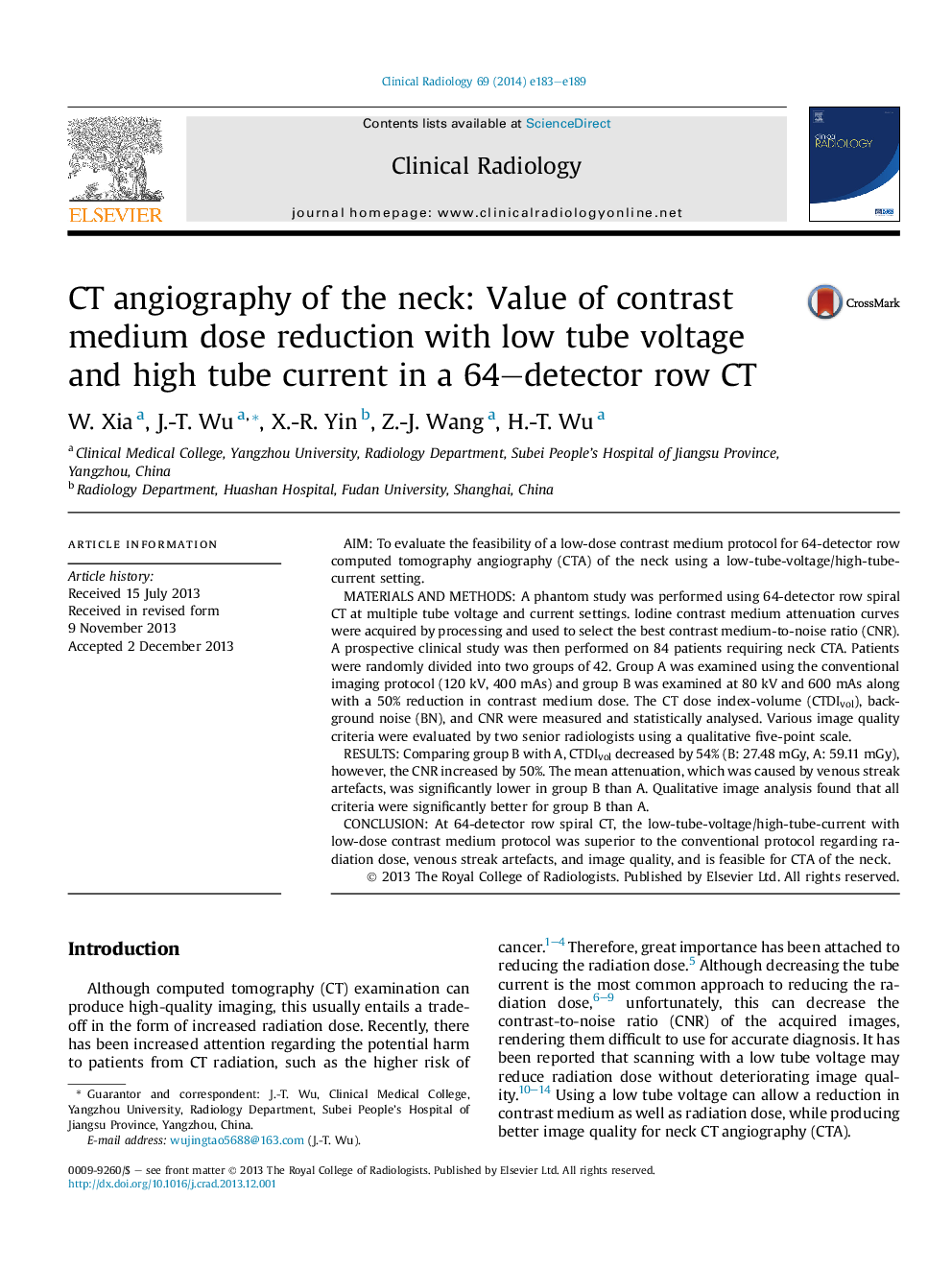| Article ID | Journal | Published Year | Pages | File Type |
|---|---|---|---|---|
| 3981636 | Clinical Radiology | 2014 | 7 Pages |
AimTo evaluate the feasibility of a low-dose contrast medium protocol for 64-detector row computed tomography angiography (CTA) of the neck using a low-tube-voltage/high-tube-current setting.Materials and methodsA phantom study was performed using 64-detector row spiral CT at multiple tube voltage and current settings. Iodine contrast medium attenuation curves were acquired by processing and used to select the best contrast medium-to-noise ratio (CNR). A prospective clinical study was then performed on 84 patients requiring neck CTA. Patients were randomly divided into two groups of 42. Group A was examined using the conventional imaging protocol (120 kV, 400 mAs) and group B was examined at 80 kV and 600 mAs along with a 50% reduction in contrast medium dose. The CT dose index-volume (CTDIvol), background noise (BN), and CNR were measured and statistically analysed. Various image quality criteria were evaluated by two senior radiologists using a qualitative five-point scale.ResultsComparing group B with A, CTDIvol decreased by 54% (B: 27.48 mGy, A: 59.11 mGy), however, the CNR increased by 50%. The mean attenuation, which was caused by venous streak artefacts, was significantly lower in group B than A. Qualitative image analysis found that all criteria were significantly better for group B than A.ConclusionAt 64-detector row spiral CT, the low-tube-voltage/high-tube-current with low-dose contrast medium protocol was superior to the conventional protocol regarding radiation dose, venous streak artefacts, and image quality, and is feasible for CTA of the neck.
